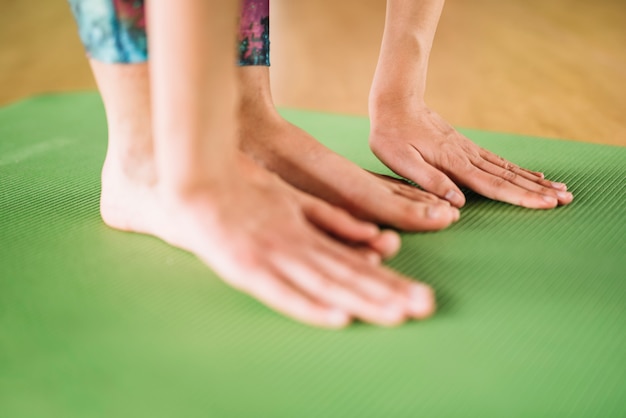
The human foot is a complex structure made up of 26 bones, 33 joints with 20 being actively mobile, 42 muscles, and at least 50 tendons and ligaments working together. Our feet enable us to stand and engage in physical activities like walking, jumping, and running. The muscles, ligaments, and tendons on the surfaces of the feet facilitate the intricate movements needed for balance and mobility.
Various foot issues can arise from several factors, such as bunions, heel spurs, plantar fasciitis, toenail fungus, and hammer toes. Causes include wearing uncomfortable shoes, repeated stress, poor hygiene, and certain health conditions.
1. Bunions
Bunions form when the big toe joint becomes misaligned, resulting in tenderness or swelling. Causes can include injury, congenital deformities, arthritis, or genetics. This condition can be painful, especially when wearing shoes that cramp the toes. Some believe narrow shoes might lead to bunions. Treatment usually involves changing footwear and using over-the-counter pain medication. If these methods don’t work, surgery might be suggested.
2. Plantar Fasciitis
Plantar fasciitis is when the plantar fascia, a thick ligament under the foot, becomes inflamed. It causes intense pain, especially during the first steps after waking up. This issue results from repetitive stress on the plantar fascia and is common among runners, hikers, and dancers. People in jobs requiring prolonged standing, like teaching or factory work, are also at risk. Treatment includes rest, physical therapy, and using orthotics or night splints. In severe cases, injections or surgery might be considered if other treatments fail.
3. Athlete’s Foot
Athlete’s foot is a skin infection caused by a fungus that also causes jock itch, toenail fungus, and ringworm. It thrives in warm, damp places like sweaty shoes and socks and spreads through contact with contaminated surfaces or infected individuals. If not treated, it can spread to the hands, nails, and groin. Doctors typically recommend over-the-counter antifungal products for mild cases, while severe cases may require oral medication. Good hygiene is crucial for recovery.
4. Hammertoe and Mallet Toe
These toe deformities are caused by an imbalance of tendons, muscles, or ligaments, leading to abnormal bending. Factors include trauma, poorly fitting shoes, foot structure, and certain health conditions. They typically affect the second, third, or fourth toes. Treatment involves wearing more comfortable shoes and possibly inserts or pads to relieve pressure. Doctors might also suggest exercises to strengthen and stretch toe muscles.
5. Corns and Calluses
Corns and calluses are thickened skin layers that develop as the skin protects itself from pressure and friction, often due to skipping socks or wearing tight shoes. The best way to treat them is to eliminate the friction source. Using a pumice stone can help remove hardened skin. Home remedies like vinegar or lemon juice soaks and garlic can also be effective. Keep your skin moisturized and wear comfy, well-fitting shoes with socks.
6. Heel Spur
Heel spurs are calcium deposits that create bony outgrowths at the heel base, often linked to plantar fasciitis. They result from stress on foot muscles and ligaments, repeated membrane tearing at the heel, and stretching of the plantar fascia, common in athletes. Treatment options include stretching exercises, taping, shoe inserts, orthotics, and physical therapy. Sometimes, corticosteroid injections are used to reduce inflammation.
7. Ingrown Toenails
Ingrown toenails are more likely in those with curvy toenails, but they can also result from injuries, tight shoes, or improper nail trimming. Symptoms include pain, swelling, redness, and sometimes infection. Treatments involve antibiotic creams, pain relief, open-toed shoes, and foot soaks. Doctors may need to lift, partially remove, or completely remove the nail in some cases.
8. Gout
Gout is a type of arthritis that causes pain, tenderness, and redness typically at the base of the big toe. It happens when urate crystals build up in the joint, leading to intense pain and swelling due to elevated uric acid levels in the blood. Treatments include medications like NSAIDs, Colchicine, and corticosteroids. Lifestyle changes, such as regular exercise and a healthy diet, can also help.
9. Blisters
Wearing poorly fitting shoes often leads to blisters, which are raised skin pockets filled with fluid. These can make walking painful. Treat blisters by cleaning the area and sterilizing a needle to gently open and drain the blister. Apply antibiotic cream and cover it with a bandage until it heals.
10. Toenail Fungus
Toenail fungus is an infection that enters through splits in the toenail or surrounding skin, causing the toenail to thicken, become brittle, and change color. Without treatment, it can spread to other nails and skin. Treatment includes medicated nail polish and over-the-counter antifungal creams or sprays. Doctors may also prescribe oral medication. It’s crucial to keep toenails short to help treatment reach deeper under the nail.